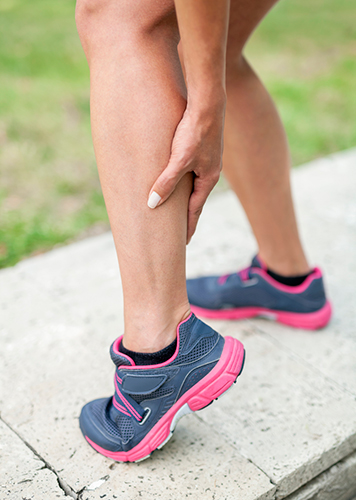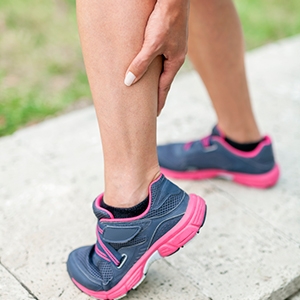
Getting a charley horse can affect many different types of people every day, from the marathon runner to your grandmother. If you have ever had a charley horse you know the debilitating feeling of the sudden tightening of your muscle which can last for a few seconds to a few minutes. A charley horse, also known as a cramp, occurs most commonly in the leg and can have several different causes and treatments. The cause for your muscle cramps may not always be easy to find, but these are some of the most common causes:
Dehydration- The amount of fluid each person needs will vary depending on things like weight, activity level, and medication. Discuss with your physician about how much fluid you should have daily.
Muscle overuse or increased activity- This is also a common cause for cramps, more so during the summer months when we lose more fluid through sweat. In this case increasing your fluid intake could help with cramps.
Your workout routine or your diet- This may lead to the wrong levels of minerals such as calcium, magnesium, potassium or sodium in your system and could lead to cramps. This is why you have heard to eat bananas, which are high in potassium, and to drink sports drinks which have more sodium. In this case eating nutritious foods could help restore proper mineral levels.
Prolonged sitting/standing (too much time in one position) could lead to a muscle cramp. If the muscle is working for an extended period of time while standing, it does not have time to rest. Conversely, if it is not being used, such as during a long seated time, this could cause cramps in some people. Stretching the muscles could help to ease or stop cramps in this situation.
Medications- Certain medications have muscle cramps listed as a side effect. If you have started a new medication and are noticing cramps, ask your physician or pharmacist about the possible side effects and whether an alternative medication might be a better choice.
Medical Conditions- Certain demographics are at an increased risk to get cramps. People with certain medical conditions such as diabetes or thyroid disorders may be at a higher risk for cramps. For women during pregnancy, cramps are very common. The elderly are also at an increased risk due to less muscle mass, and they are more prone to dehydration.
Signs that you should seek medical treatment by your physician include:
- You are getting cramps regularly and they are affecting your function
- The cramp causes severe discomfort
- You have skin changes, redness or swelling in the area
- Your muscles feel weak after the cramp ends.






